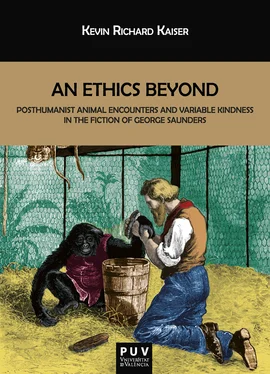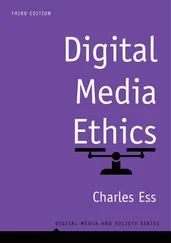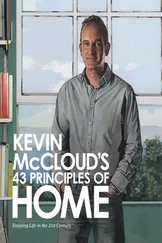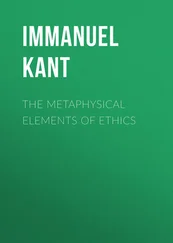To summarize the human as topic more simply, what passes for discourse on the human has been almost invariably discourse on a type of human, not about the human, whatever it may be. I will return momentarily to using the standard terminology: literature of and about the Other, if allowing us to engage with the Other, has generally not been written by the Other—or, if it has been written, has not been read, whether it has been available to read or no. Here, I am not referring to a strict definition of what we typically mean by “read” and “write.” I mean them in a more Derridean sense. The text of a nonhuman animal, for example, may appear to us “unreadable.” As previously mentioned, this is why writing about consituents is so dangerous: we continually risk a misrepresentation. Furthermore, we lack terms by which to more properly communicate in an unbiased manner.
Because we infect language with biases, some posthumanists insist that neologisms and radicalized language are necessary. Constituents may be an awkward term, but I believe it more accurately describes what we mean by encounters between the subject and the Other. While use of “the Other” calls attention to alterity, I believe that it still perpetuates the conception of a thing that the Human is above and against if taken out of context. Furthermore, posthumanism, even in its efforts to address the issues neglected by humanism, risks glossing over such matters precisely because conceptions of the human are carnophallogocentrically-b(i)ased—as is the language we have inherited. Again, I am generalizing and oversimplifying; however, the forefathers who have developed so many of our theories and praxis for centuries leave us with the difficult task of unharnessing these theories and praxis from mores. As Donna Haraway remarks,
I never wanted to be posthuman, or posthumanist, any more than I wanted to be postfeminist. For one thing, urgent work still remains to be done in reference to those who must inhabit the troubled categories of woman and human, properly pluralized, reformulated, and brought into constitutive intersection with other asymmetrical differences. (WSM 17)
Because of the aforementioned dangers, it is important for posthumanism not to remain occluded in isolation. Posthumanism is interdisciplinary, and if it is to remain actively open, it needs “outside” fields—that is, integral fields—and radical sensing by which to check this openness. 23
One more claim that needs attention—and that follows my above remarks concerning openness—is Nayar’s emphasis on living organisms and technology as separate categories. Again, this is why I prefer not to think through the Other but to sense through constituents. I argue that we can and should think of beings in a broader sense and in more equivalent terms. We must accept and appreciate all entities as having life and death; that is, they are all subject to flux. While posthumanist theory focuses on interbeing identity especially in terms of nonhuman animals, as will primarily be the case here, I find it more promising for posthumanist theory if we do not delimit our notion of beings. In the interview “‘Eating Well,’ or the Calculation of the Subject” (1988), 24philosopher Jean-Luc Nancy asks Derrida why he limits himself to the animal. Derrida counters: “Nothing should be excluded. I said ‘animal’ for the sake of convenience and to use a reference that is as classical as it is dogmatic. The difference between ‘animal’ and ‘vegetal’ also remains problematic” (EW 269). Some theorists might consider this reaching too far, yet if we are to claim that posthumanism must remain open, why imply limits beforehand?
What is called species identity at least applies to plants, but many native cultures, being less impoverished in imagination than several of our philosophers, would even include minerals as living entities. We would be better prepared to understand interbeing identity as not being bound strictly to relationships between sets of principal taxonomic units, even if that determining factor is what we consider life. If subjectivity applies to beings we do not generally classify as subjects, it does not follow that we must accept any formulation of the human. However, if we are questioning subjectivity, why would we only extend subjectivity to a predetermined group? Why preclude any subject at all? We should not be content to eschew the dog-eared, moth-eaten man/animal binary that somehow sets the human apart from all other species. We should also not accept a realigned dualism, such as an organism/object binary, which, I argue, is untrue both in its ontic and ontological senses. It is not my intention to formulate a metaphysics; metaphysics should remain, quite simply, meta, in many senses. My aim here is to insist on radical openness, in the monistic sense. What I call thinking or sensing occurs “both” bodily and mentally. This is not to deny an apparent difference but to assert that body is indeed as much a performer in the active play of thinking as has been historically granted the role of the mind.
Because “Western” language—if I may generalize—lacks appropriate theories regarding this topic, I borrow from Buddhism to argue that mind and body are interdependent due to their dependent origination, which appears by conditioned, plural causality. Neither can exist alone. The same is true of our relationships with those constituents that seem to appear as separate objects. For Nayar, critical posthumanism rejects exclusionary formulations in favor of critico-theoretical conceptions that offer “a sense of the human as an instantiation of a network of connections, exchanges, linkages and crossings” with all entities (5). Briefly, interbeing identity is relational and dependent. In this respect, terms like “interspecies” and “relationship,” or Haraway’s “becoming with,” take on a more resilient import when not pre-delimited. Likewise, Nayar insists that “[i]n lieu of traditional humanism’s species-identity, treated as self-contained and unique, critical posthumanism focuses on interspecies identity” (3, italics original). Although not the thrust of my work here, it is worth emphasizing that the human itself is a superorganism—that is, ninety percent of what each of us considers a self is bacteria and fungi. Our identity truly is interbeing and a welcome reason why we should think in terms of constituents.
Critical posthumanism’s focus on interbeing identity rather than humanism’s autonomous, nonpareil formulation of the human does not mean that traditional posthumanism and its concerns are somehow cut off from humanism. Recalling Herbrechter, we find an insistence on the need for a posthumanism that is both open “to the radical nature of technocultural change” and “emphasizes a certain continuity with traditions of thought [that] have critically engaged with humanism, and which, in part, have evolved out of the humanist tradition itself” (3). Critical posthumanism is both radical and evolutionary because it calls on us to think in new ways while simultaneously drawing on humanism’s contributions, taking them to their more proper conclusions. Rather than discard humanism altogether—if that is even an option—we should remain open to the possibility of applying certain humanist practices to humanism itself and uncover the potentialities that have not been felt through, opening a path to new modes of experience and expression that are not humanist.
My claims concerning humanism may seem contrary to what I have argued thus far. However, while we do not need to accept humanism’s formulations, we can accept certain ideas that may be adopted and reformulated to address their shortcomings in their inaugural forms. Furthermore, Herbrechter recognizes the venture of critical posthumanism as the need “to re-evaluate established forms of antihumanist critique, to adapt them to the current, changed conditions, and, where possible, to radicalize them” (3). I understand this as different, at least potentially, from developing posthuman theories that collapse into humanism. As I have suggested, as Wolfe has emphasized, and as Herbrechter reminds us here, critical posthumanism must not lapse into issuing humanist frameworks under the guise of posthumanism—that is, humanist posthumanism—but develop approaches that are posthumanist—and not, for example, transhumanist.
Читать дальше












